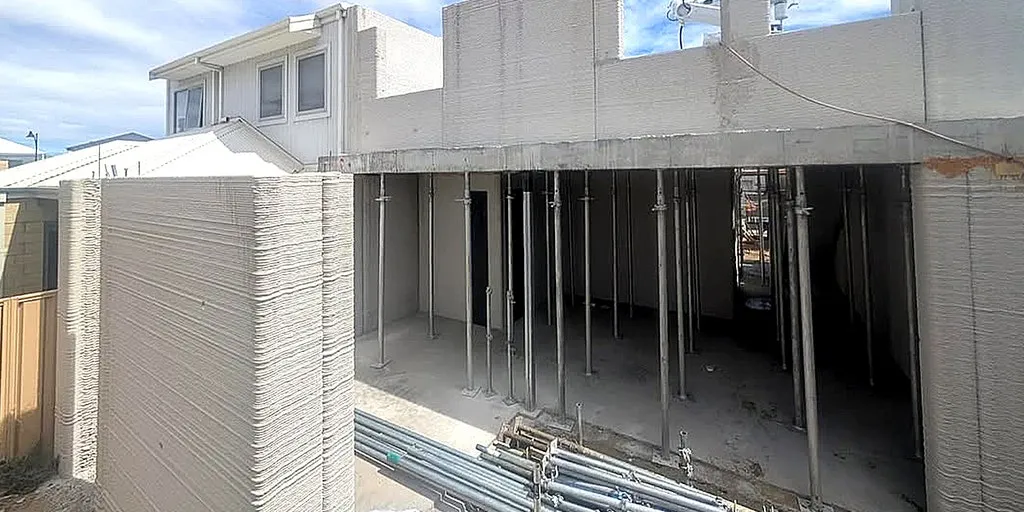A major milestone in construction has arrived. This time from Western Australia. Contec Australia has completed the nation's first multi-story 3D concrete printed home. Located in Tapping near Perth, the two-story residence was finished in just five months. Most impressive? The structural walls were 3D printed in only 18 hours of active printing time.
This matters because it points to where housing might be heading here, too. With rising costs, labor shortages and a push for more sustainable building methods, this kind of breakthrough could shape the future of American neighborhoods.
Contec's project isn't just a prototype. It demonstrates how 3D concrete printing can bring major benefits to everyday housing. Compared to traditional masonry construction, the Tapping home achieved:
- Speed: Structural walls finished in 18 hours; full build completed in five months.
- Cost efficiency: 22% cheaper than comparable masonry builds in WA.
- Design freedom: Complex shapes, curves and openings without added expense.
- Sustainability: 30% lower CO₂ emissions than conventional concrete and minimal waste.
- Durability: More than three times stronger than brick, fire- and water-resistant and able to withstand harsh weather.
And it doesn't cut corners on durability. The walls are fire-resistant, water-resistant, termite-proof and cyclone rated, features U.S. regions facing hurricanes, floods and wildfires could find especially appealing.
Instead of stacking bricks, Contec's robotic printer extrudes a specialized concrete mix based on a digital 3D model. The mix sets in under three minutes, allowing new layers to be stacked without scaffolding or formwork.
The walls are printed in precise layers over the course of 18 hours of active machine time. Once the structural shell is complete, traditional crews step in to add the roof, wiring, windows, flooring and finishing touches.
You may have already heard of Icon, the Texas-based startup that has been pioneering 3D printed homes. Icon's builds include entire neighborhoods of single-story houses in Austin, as well as experimental multi-level projects. However, most of Icon's multi-story designs rely on a hybrid approach, with 3D printing for the ground floor and timber or steel frames for the upper levels.
That's what makes the Tapping project stand out. Contec printed the structural walls for both stories in just 18 hours of active printing time, something not yet widely seen in the U.S. This could signal the next step for American 3D printing: scaling beyond single-story housing into more complex multi-story designs.
One of the biggest questions people have is price. Contec hasn't shared the exact cost of the Tapping home, but the company says it delivered the structural walls 22% cheaper than a standard masonry build. That saving adds up when you consider how much of a home's budget goes toward labor and materials.
In the U.S., companies like Icon have priced 3D printed homes starting around $100,000 to $150,000, depending on size and finishes. While final costs vary by region, land and design, the potential savings from reduced labor and faster timelines make 3D printing an attractive option as housing costs continue to rise.
For American homeowners, builders and communities, the Tapping project shows how 3D concrete printing could offer faster, cheaper and more resilient housing. Imagine moving into a new home months earlier, with walls that are stronger, more sustainable and better able to handle extreme conditions.
3D printed housing is moving from concept to reality. This home shows that walls can go up in just 18 hours, and a full build can be finished in only a few months. That kind of speed changes the way we think about construction. With rising costs and ongoing labor shortages, builders need new solutions. 3D concrete printing offers a path to faster, more affordable and more sustainable homes without cutting corners on strength or safety.
The big question is, if a 3D-printed home became available in your area, would you move in?
